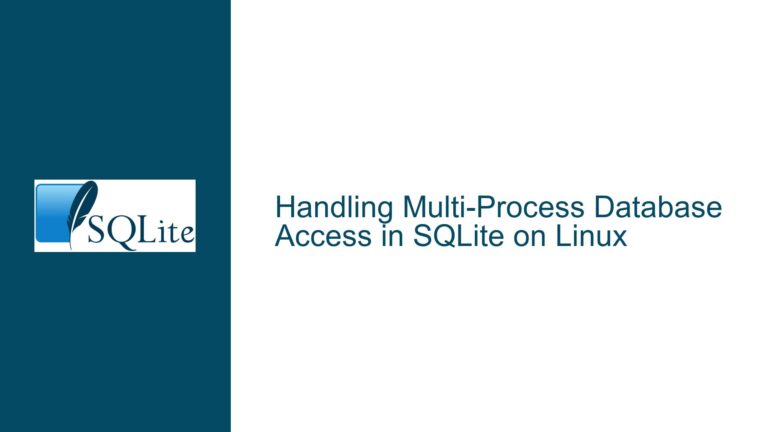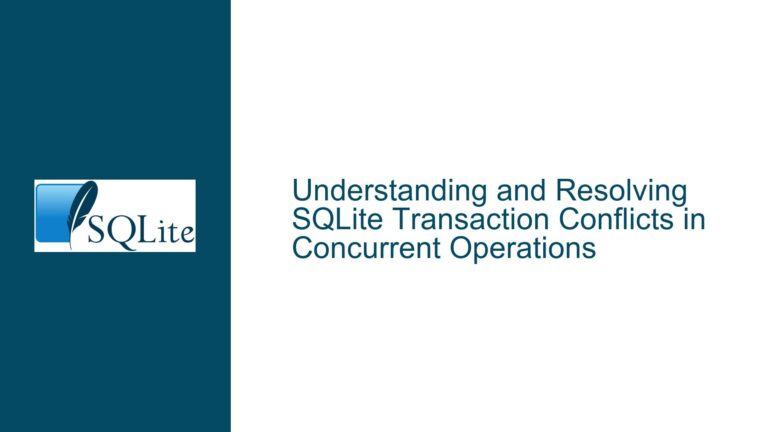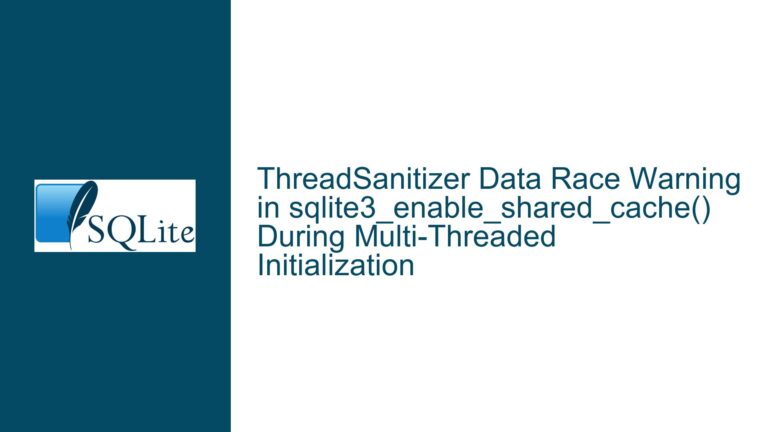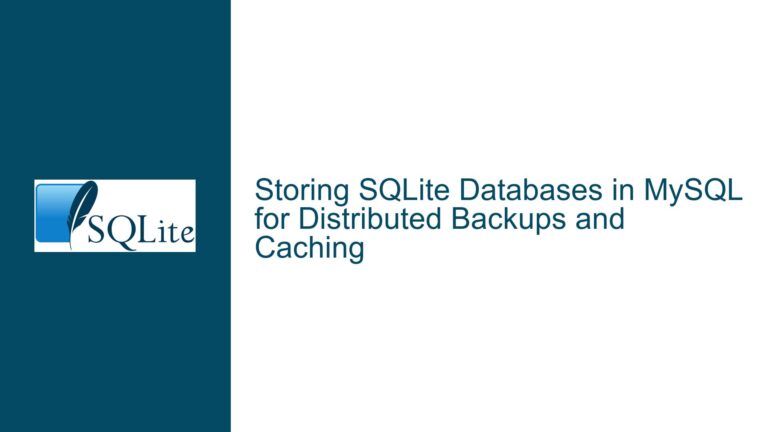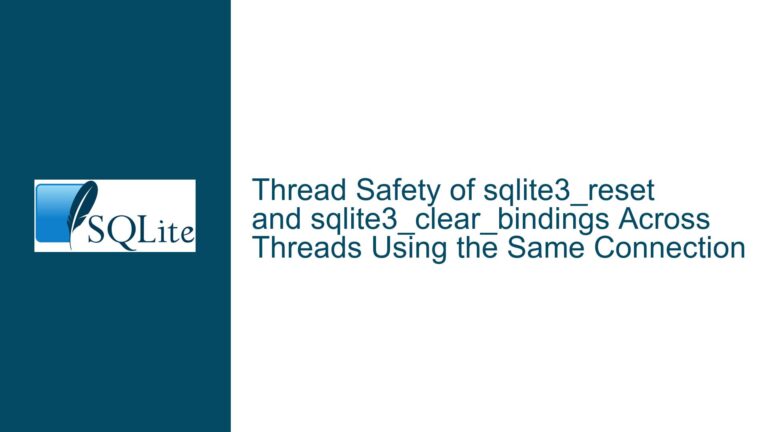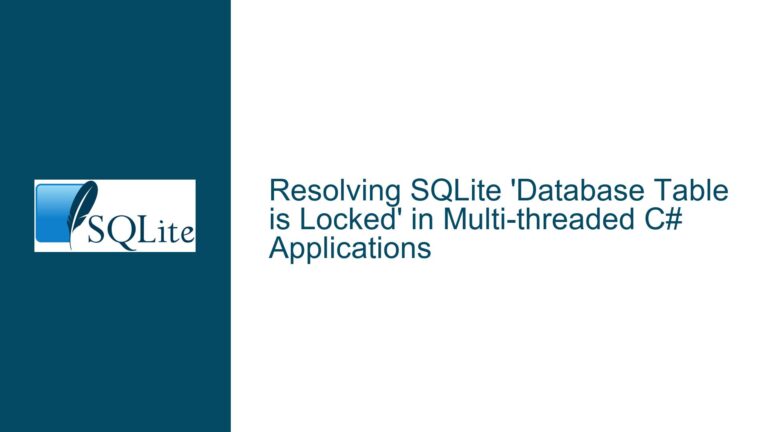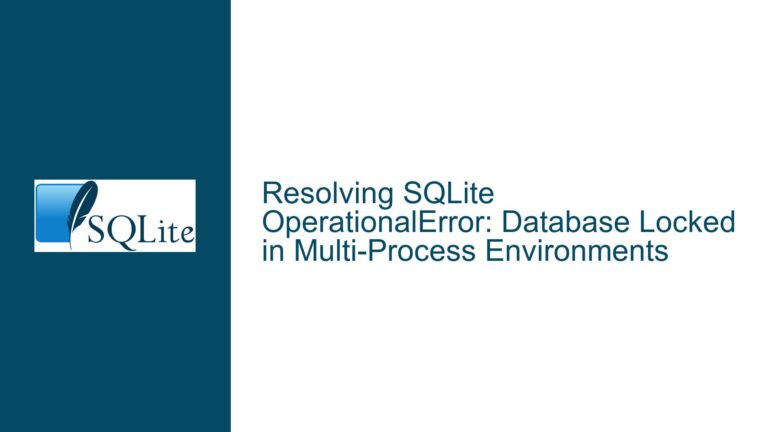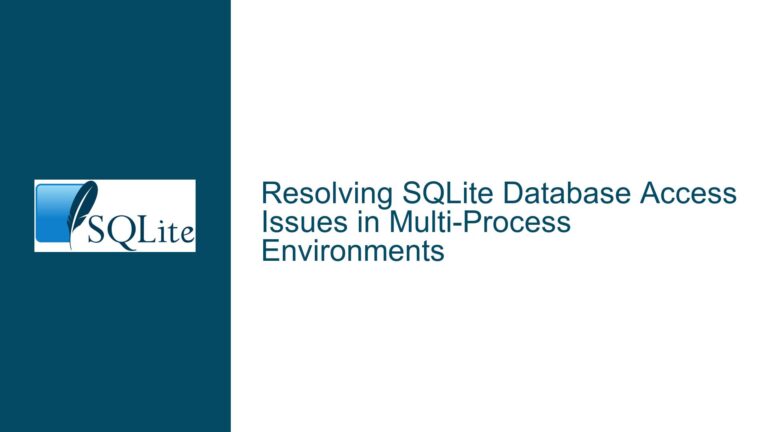Handling Multi-Process Database Access in SQLite on Linux
Understanding SQLite’s Multi-Process Concurrency on Linux SQLite is a lightweight, serverless, and self-contained database engine that is widely used in embedded systems, mobile applications, and small-scale server applications. One of its key strengths is its simplicity, but this simplicity comes with certain limitations, particularly when it comes to multi-process concurrency. On Linux, where multiple processes…
